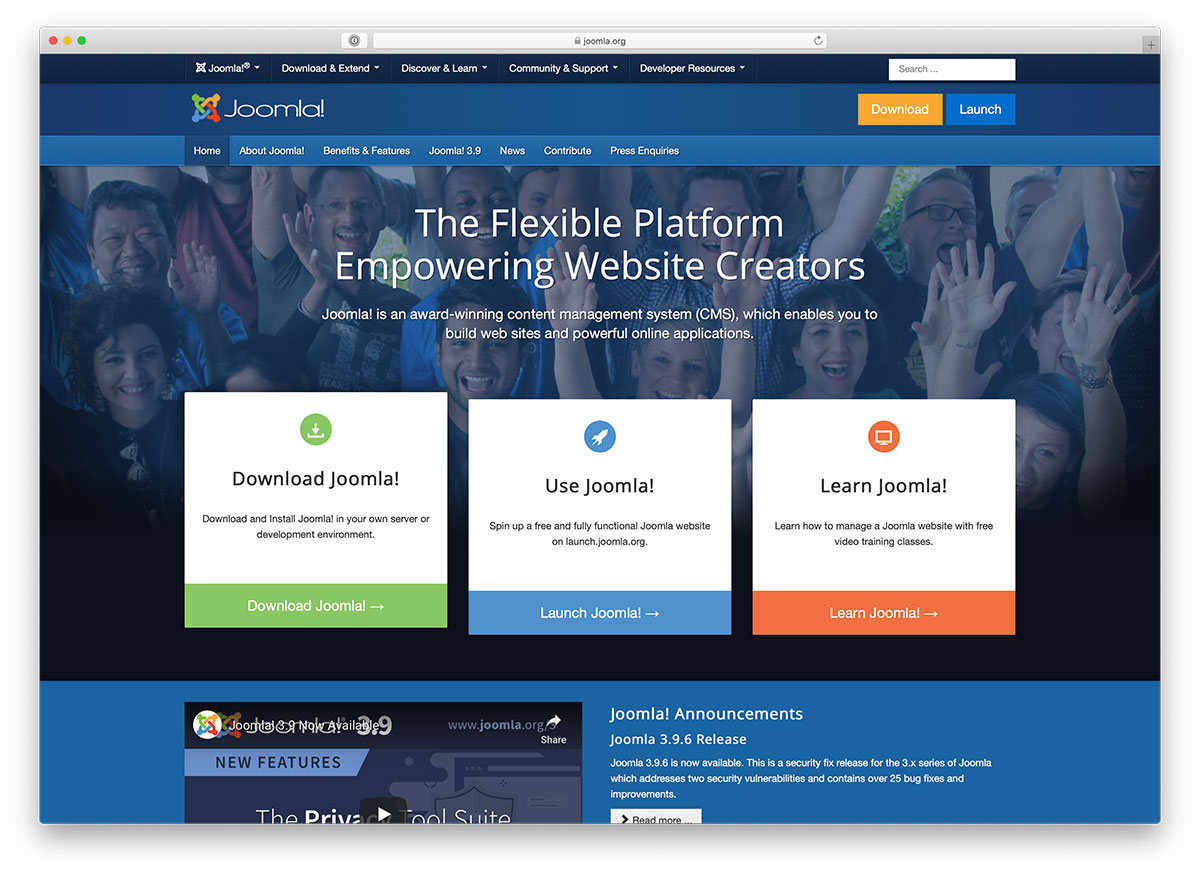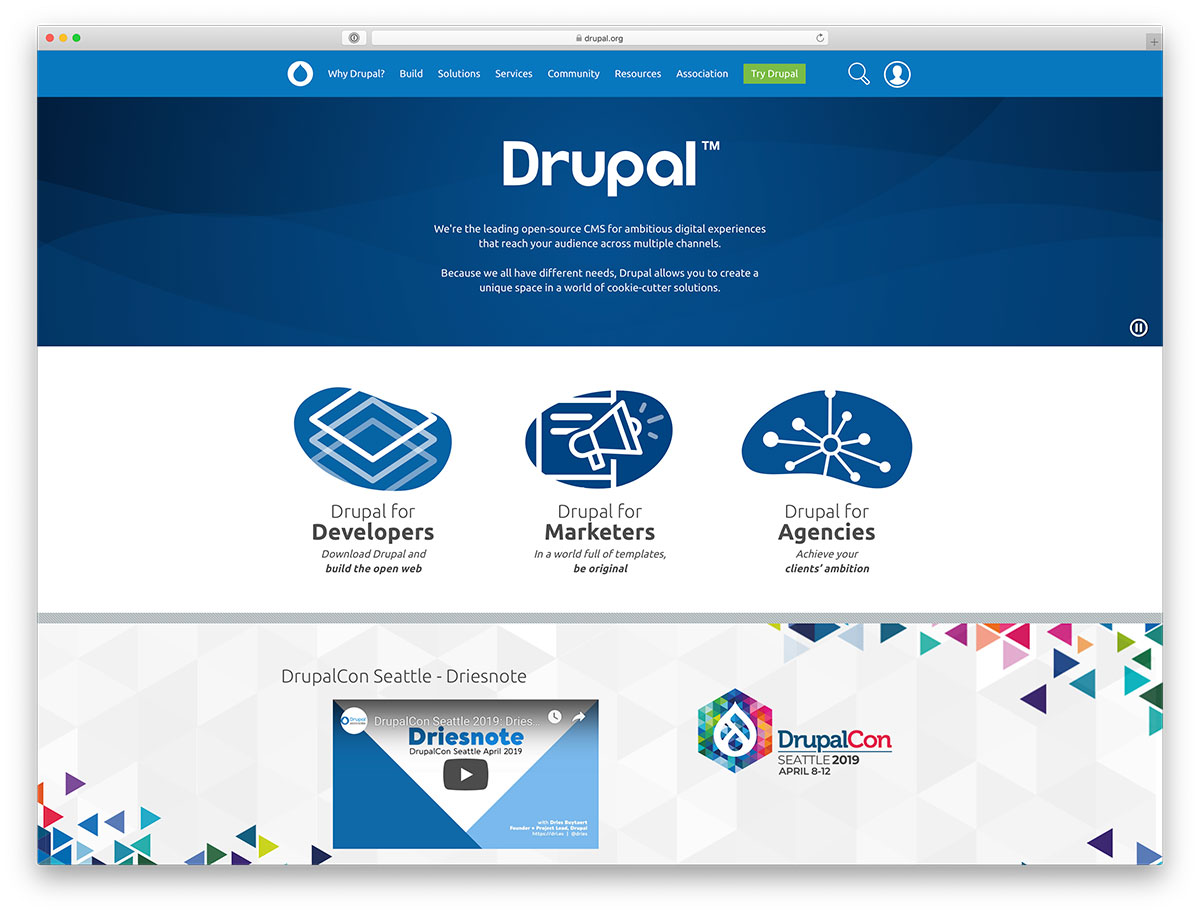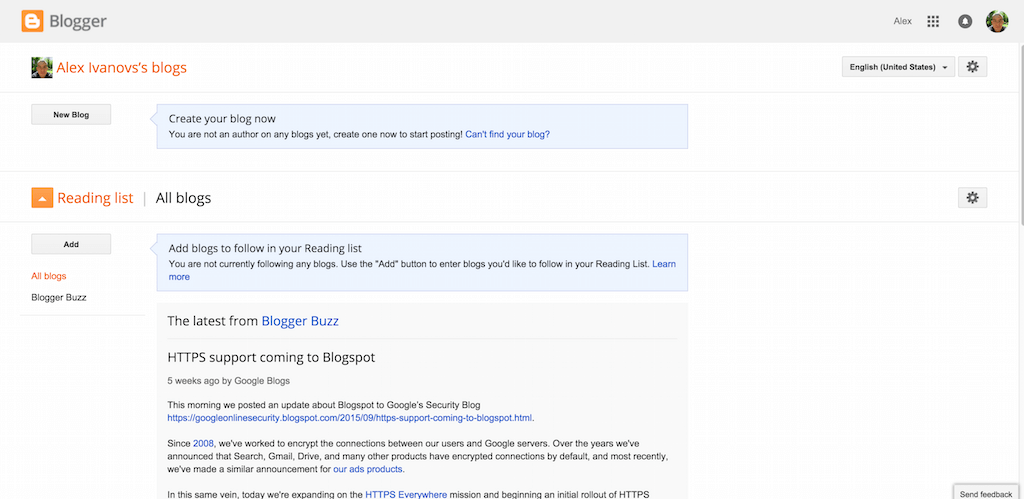10 Most Popular Free Content Management Systems (CMS) 2019
When it comes to building websites that are focused on content, the best option is usually to opt for a content management system. Having a custom website developed without a solid maintenance budget for the future can have a huge effect on your business operations in the long run, whereas most of the current content management systems today are open-source and easily maintainable, not to mention free.
W3Techs content system management report suggests that the leading top three CMS’s are accountable for more than 70% of total CMS usage across all websites on the web. You can learn more about the other types of content management systems out there using this site. This roundup of the leading content management systems focuses on both the leading platforms, but also specific niche ones in markets such as eCommerce.

Content Management System Market Share 2019. It indicates that WordPress is used by 33.9% of all the websites globally. And it has content management system market share of 60.7%.
Startups, eCommerce business owners, creative artists, writers, and many others who come from similar fields have realized that you don’t have to invest tens of thousands of dollars into your own personal content platform, and instead it’s possible to rely on what is already out there, fully established and support by community of millions.
The following list of the most popular content management systems has been gathered thanks to data from some of the leading analytics platforms on the web, and we have made sure that there is enough variety so that anyone and everyone can find a solution to their particular idea.
Explore 2.5 Million Digital Assets including 1,700+ CMS Templates
2M+ items from the worlds largest marketplace for CMS Templates, Themes & Design Assets. Whether that’s what you need, or you’re just after a few Stock Photos – all of it can be found here at Envato Market.
WordPress

WordPress has become the standard for a website that’s both functional and pleasant to browse. Startups and mobile applications have long transferred to WordPress for their website needs, not only because of the wide variety of styles available and the ease of design flexibility, but because WordPress is secure, reliable and pleasant to work with. WordPress users have the option to built a site of any context; eCommerce, business, creative, community, non-profit, and so forth.
Shopify (eCommerce)

Joomla!

Many of the people that I know who are using Joomla! are quite fond of features like native front-end content editing, content management flexibility, and a native integration of multiple languages which makes the sites content more friendly towards visitors of foreign nature.
Drupal

Wix
Wix is by far the most popular website builder out there wil millions of users worldwide. It is considered as CMS but it is not a standalone CMS meaning you are tied with their service. It is a great service regardless but keep in mind that you can’t decide where and how to host it. This makes it much easier to setup and use than most but might become pricity as your business and traffic to your website grows.
Magento (eCommerce)

Blogger
Blogger has evolved drastically over the years. But, it keeps its legacy towards being a blogging platform. Developers utilize it as a content management system in more ways than one. In recent years, a lot more flexibility was introduced in the way Blogger sites can be styled. This means that photographers, foodies and creatives have more room for building a content platform that suits their needs. Blogger is part of Google, and offers a range of features like custom domains, custom styles, and customization options.
TYPO3
The biggest argument about TYPO3 versus other content management systems is that TYPO3 has been built exclusively to serve sites of a much larger magnitude, as well as to be a native content management platform, whereas platforms such as WordPress are traditionally considered to be native blogging platforms. TYPO3 is popular amongst corporate websites, thanks to its integration of features that would otherwise require extensions or plugins. We all know that these slow down the site and overall site performance nut TYPO3 integrated them for you. The developers made TPO3 highly flexible. You can also extend it using new functions without writing any program code.
vBulletin
vBulletin used to be just a forum platform. In the recent years, a switch happened from traditional forum community services to a more content management oriented platform. It also still involves a lot of community involvement through native forum functions. Those who wish to build a community around their content should look at vBulletin as one of the top choices. It is secure and the team behind this platform have over a decade of experience with building platforms. It also supports some of the largest communities in the world. It’s the perfect platform for webmasters who want to create a lot of content with the help of community.
Liferay
Liferay is a fairly new player in the CMS game, but is already home to some 1,500+ customers. These customers enjoy building unique websites, customer portals, membership sites, and content resources for needs of any variety. Liferay’s modern approach to design and technology has enabled them to attract their audiences. Audiences that wants to build professional and good looking sites with the help of latest advancements in content technology.












Popular does not mean the best:)
A big missing CMS from this list is DNN. Sure it runs on Windows Servers, but it is open source, and has over 1 billion users. Its a pretty amazing framework.
IS DNN WORK LIKE WORDPRESS OR JOOMLA CMS
personally wordpress is the easiest way to build website
Sir please help me. WordPress is taking more ram & wordpress is too slow. Please suggest me any light cms. Please reply, I bookmarked this post and I will check latea.
Sharma,
Make sure to implement a proper cache and your RAM and CPU usage will drop tenfold. WordPress when used right is not resource heavy but you need to make some tweaks. The best WordPress cache plugins are compared here.
Thank you sir
For every blogger or business enterprises, the best platform to reach to its target audience is to work on WordPress. WordPress CMS development is simple to understand and is pocket-friendly for every type of business enthusiast. If we go through the statistics, according to the Web technology survey it shows more than 40% of the web is powered by WordPress.
I found 4 amazing CMS which are open source and not in this list.
1 – October CMS ( Laravel cms )
2 – Pagekit ( VueJS CMS , Ease and Fast )
3 – Cockpit CMS ( No frontend / Form based API )
4 – Bludit CMS ( Easy API )
And I want to add another one:
5 — b2evolution CMS ( social CMS, also includes Forums )